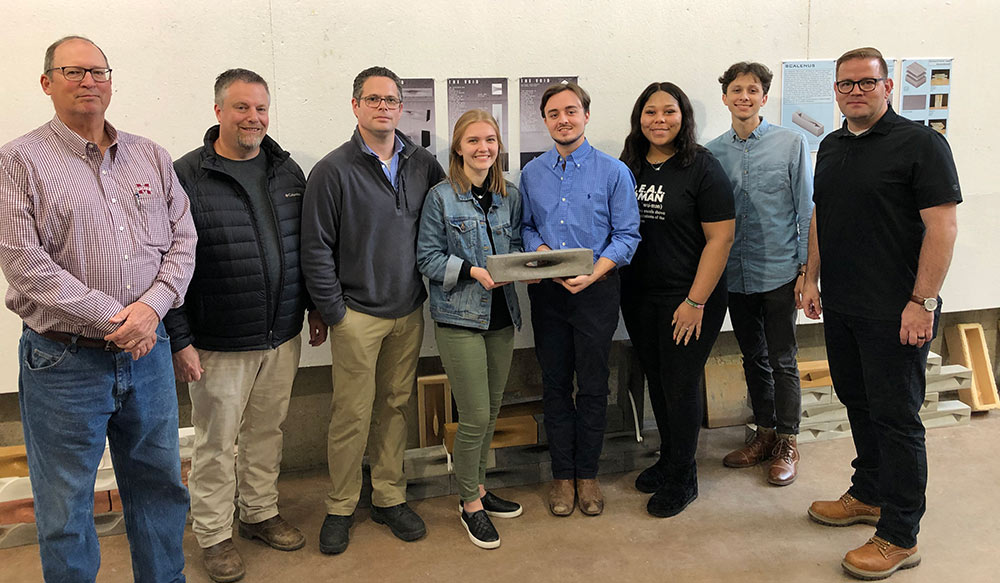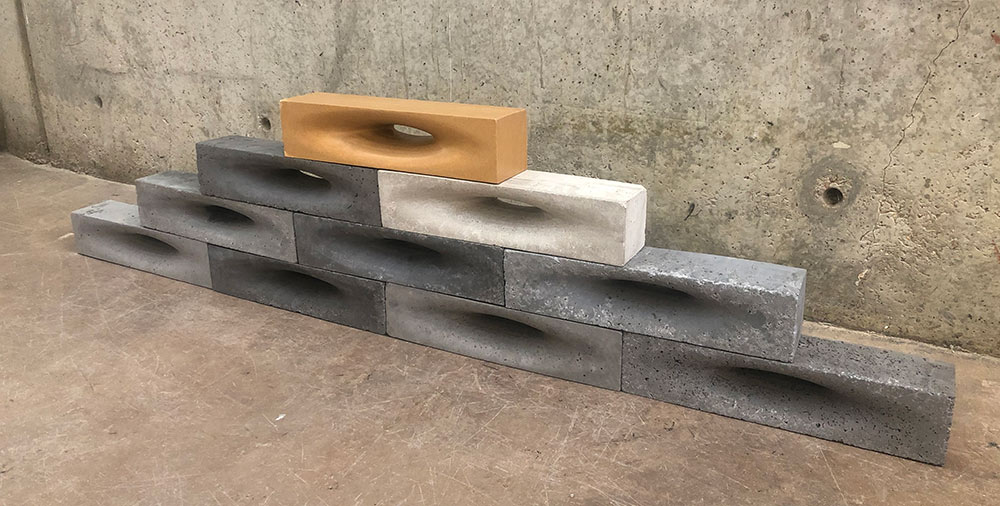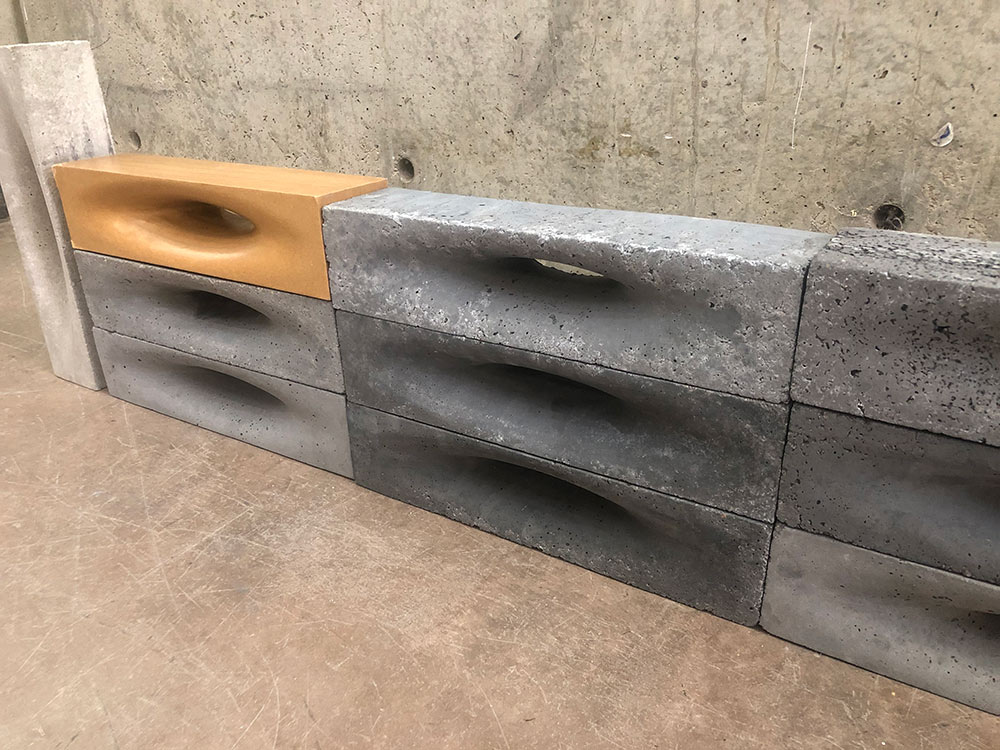
A custom-brick project designed by a team of four Mississippi State architecture students recently won second place in a national masonry unit design competition.
Juniors Jackson “Jack” B. Harrell of Clinton; Caya S. Perry of Huntsville, Ala.; Ruth “Ruthie” E. Southall of Acworth, Ga.; and Jon R. Zeipen of Jenison, Mich., submitted their team’s video presentation of “The Void” brick design for the National Concrete Masonry Association 2020 Midyear Meeting in early August. The meeting, originally scheduled to be held in Milwaukee, Wisc., was held virtually due to the ongoing pandemic.
In addition to Mississippi State, finalists included teams from Ball State University, Iowa State University and North Carolina State University.
“This year, ‘The Void’ successfully merged simple beauty with thoughtful acoustic sensitivity,” said MSU Associate Professor of Architecture Jacob A. Gines. “Each year my students continue to impress on the national stage with their enthusiasm, ingenuity and creativity. For the third straight year, an MSU team of architecture students was selected as national finalists, which is no small feat.”
(Read about the other teams: first place in 2018 and second place in 2019).

“The Void” was completed in Gines’ spring 2020 materials course. For the assignment, the team produced a set of eight concrete masonry units based on Saturn Materials’ “Monarch” brick. Students considered use of light and shadow, composition, orientation, usefulness and configuration while following a very specific digital fabrication process for the design and development of their custom block.
“‘The Void’ is all about revolution, the idea of turning about a point,” said team member Harrell.
“Right off the bat, you notice something is very different about our brick,” added team member Southall. “Usually, it is not a good sign when building materials have holes in them. In our case, we turned a gesture not frequently seen into something simplistic and graceful. The hole running through our brick gently connects one brick to another and very comfortably fits into a mason’s hand.”
After creating a few bricks following this design, the group noticed the shape also resembles an amplification device or sound absorption panels.
“Once we made the connection, we reached out to local acoustic specialist David Woolworth, who helped us explore this new side of our project,” said Southall.
Through research and with guidance from Woolworth, the group concluded that the brick could in fact provide some amplification and dampening effects.
Adding this additional acoustic aspect to the project is what group member Zeipen thinks helped the group stand out to judges.
“We took the idea of interaction and gave it a unique purpose by engaging a form past the visual sense,” he said. “The inclusion of more than one of the senses urges the question of how we as designers close the gap between physicality and experience.”
Harrel felt it was the simplicity of his team’s design that put it on top.
“I think there’s a certain beauty in simplicity,” he said. “Void’s single movement, that revolution around the center, allows for some unique and really interesting opportunities to create permeable barriers.”
 The whole team agreed that their success in being able to turn a concept into a tangible product wouldn’t have been possible without the support and feedback received throughout the process by their professor and the industry professionals he helped to connect them with.
The whole team agreed that their success in being able to turn a concept into a tangible product wouldn’t have been possible without the support and feedback received throughout the process by their professor and the industry professionals he helped to connect them with.
Gines said students in his class benefit from this project by learning how to collaboratively and professionally engage with these industry leaders to gain a deeper understanding of the realities of concrete as a material as well as the constraints of the fabrication process.
Harrell echoed this, saying, “I think that designing a unit like this forces you to think about construction from a different perspective, and the advantages that provides are limitless.”
Perry said she learned skills she plans to use in her future career and added that the collaboration and teamwork aspect of the project was very valuable to her.
“I was able to learn from my peers and get a better understanding of their perspectives.”
Southall said she gained a new respect for the materials used in the fabrication process.
“It is not as easy as I initially thought it would be, and I learned so much throughout the entire process.”
“These students worked tirelessly to create an amazing concrete unit design,” said Gines. “I couldn’t be more proud of them and what they’ve been able to accomplish.”
The Mississippi State University School of Architecture offers the state’s only professional architecture degree accredited by the National Architectural Accrediting Board (NAAB).
MSU is Mississippi’s leading university, available online at www.msstate.edu.